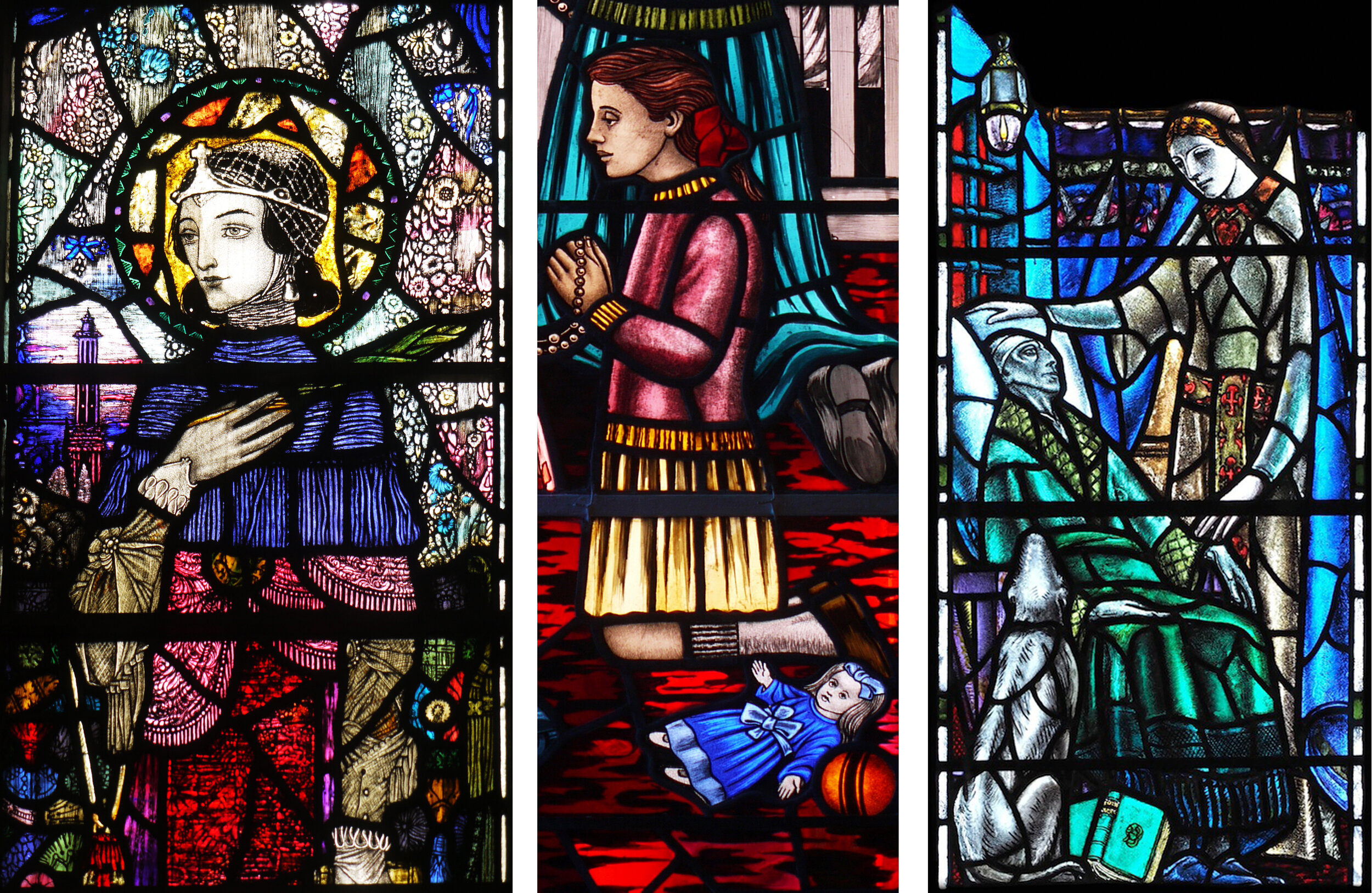Left: Self portrait aged fourteen. Right: Self portrait years later.
This is the self portrait (above left) when I was fourteen that made me want to revisit the self portrait theme. Unfortunately, none of the drawings I’ve done over the past few weeks, particularly the ones in pencil, have been anything like as good. So I decided to draw a new portrait (above right) using the 14 year old one as a template so the two drawings would fit on top of each other, and the two painted glass heads that followed would show my face in two different time periods. I didn’t labour over the glass painting too much and made a few versions before I got a pair of heads that matched up to good effect (below).
Left: Two layers of head encircled by painted scraps. Right: Self portrait two 270 x 270mm.
In the finished square panel (above right) I had fun with the leading. A lead line loops out of the side of the head to form a background and shoulders made of glass scraps from two recent samples in my favourite colour, which has always been yellow. I put the youthful head on top of the older one so the hollows and wrinkles are less prominent, making me wonder whether I should get a fringe cut again.
Detail of self portrait two
Left: Four self portrait drawings on top of each other. Right: First version of self portrait three
The idea for self portrait three was to paint two quick heads and then combine the best parts into one by chopping them up. I had a pile of drawings of me in the same position (leaning anxiously into the mirror) to copy from (above left) and an idea for a background of wavy lines on top of a roughly painted section. This plan (above right) didn’t really work, the piece had a sombre, anxious appearance so I decided to do some more chopping and introduce coloured scraps to enliven the piece.
Self portrait three 265 x 475mm.
Detail of self portrait three
Self portrait number three was supposed to be the last one, but I still had half heads left from the last two portraits. So I shoved these bits together to make another head, combining it with an old vibrant green sample for the background to make a tiny mash up portrait. It felt as if I was finding a way to make the self portrait more light hearted, getting away from the intense stare of an artist looking at herself in the mirror.
Mash up self portrait 160 x 180mm
























